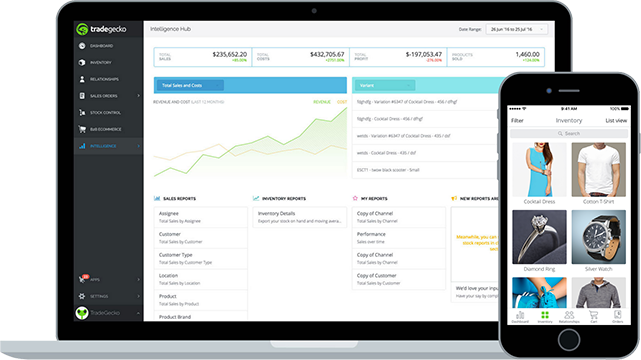With the constant advancements in B2B technologies and capabilities, we are predicting 2020 is going to be a big year for wholesale distribution. With wholesale quickly catching up to retail, we expect to see more B2B businesses embracing the new world of selling and managing inventory online, especially after COVID-19. With this said, we have identified 5 key trends for wholesale distribution in 2020. These trends include omnichannel selling, growing commerce ecosystems, expanding into global markets, inventory transparency and automation.

Latest Trends in Wholesale Distribution 2020
1. Omnichannel selling
Although the process of selling through multiple channels online and offline is nothing new to the eCommerce world, more and more B2B businesses are starting to embrace omnichannel selling. In 2020, omnichannel selling is set to take multichannel selling a step further by offering consumers a streamlined and connected buying experience across all platforms. The key difference between multichannel and omnichannel selling is that omnichannel is much more consumer-centric. It focuses on enhancing the customer experience by offering more flexibility to consumers in engaging with brands however they like.
Read more: Omnichannel strategy

2. Growing commerce ecosystems
B2B sellers are investing more and more in eCommerce technology, so that they can provide the same easy ordering and customer experience that online retailers enjoy. In 2020, wholesalers will be able to create commerce ecosystems that are stronger than ever. Online wholesale stores will become increasingly discoverable through search engines, price negotiations could happen in real time, and the ordering process will take place virtually using online catalogs and payment gateways. As B2B businesses evolve to a more traditional retail approach, they will be able to offer wholesale customers the same sophisticated level of services that retailers have been taking advantage of for years.
Read more: Growing a commerce ecosystem

3. Expanding into global markets
Expanding into global markets is a “must” for the B2B eCommerce market as we expect to see more and more B2B businesses expanding overseas in 2020. As customers continue to make purchases internationally, wholesalers need to focus on the digitalization of their buying and supply chain workflows, ensure their online marketplaces are transforming cross-border trade, implement integrated cross-channel marketing strategies, and streamline their cross-border payment technologies. Wholesalers will need to adapt in order to stay competitive.
Read more: Expanding into global markets
4. Inventory and Order Management Transparency
Wholesalers are increasingly implementing new inventory management technologies that allow them to make data-driven business decisions and handle business operations centrally. To maintain a competitive edge, B2B businesses must focus on investing time and money into “integration friendly” inventory management systems, changing the supply chain, and marrying B2B selling with the B2C customer experience.
Read more: Inventory and Order Management Transparency

5. Automation
Automation and tracking innovation allows wholesalers to more effectively manage operations and make informed decisions about shipping, staffing, and warehousing. Thanks to technology, shipping for wholesalers stands to be more efficient than ever in 2020. Likewise, increased growth in AI and machine learning will give B2B wholesalers the ability to easily manage and analyze data. This will allow for better planning and reduced operational costs. Looking ahead, more businesses will begin to utilize mobile apps and other connected devices to make operations easy to oversee.
Read more: Supply Chain automation
2020 stands to be a significant year for wholesale distribution, and TradeGecko’s order and inventory management software is here to equip B2B businesses with the tools needed to stay ahead of the competition.









